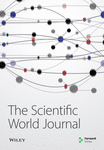Global Biomonitoring of Perfluorinated Organics
Abstract
The environmental distribution of fluorinated organic compounds (FOCs) has been less well described than the other halogenated hydrocarbons such as chlorinated and brominated compounds. This is despite the fact that FOCs have been used in a wide variety of products and applications for more than 50 years. FOCs are resistant to hydrolysis, photolysis, microbial degradation, or metabolism by vertebrates due to the high energy of carbon–fluorine bond. In particular, perfluorinated (fully fluorinated) compounds (PFCs) have the potential to persist in the environment. But, until recently, the extent and magnitude of environmental distribution of PFCs was unknown. Recent development of an analytical technique for PFCs using high performance liquid chromatography-negative ion electrospray tandem mass spectrometry (HPLC-ESMSMS)[1] permitted the survey of PFCs in livers and blood plasma of wildlife on a global scale[2].




